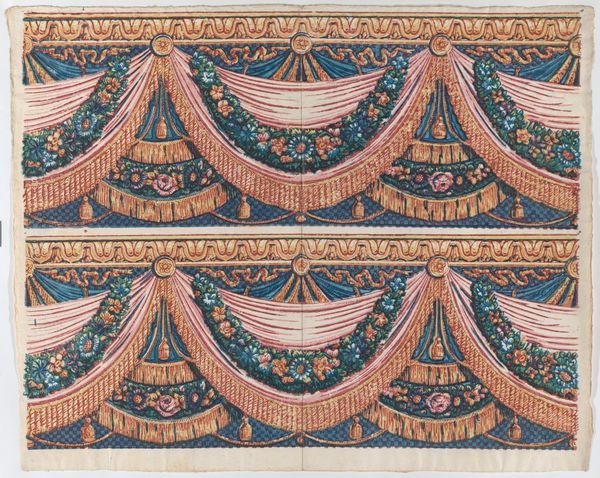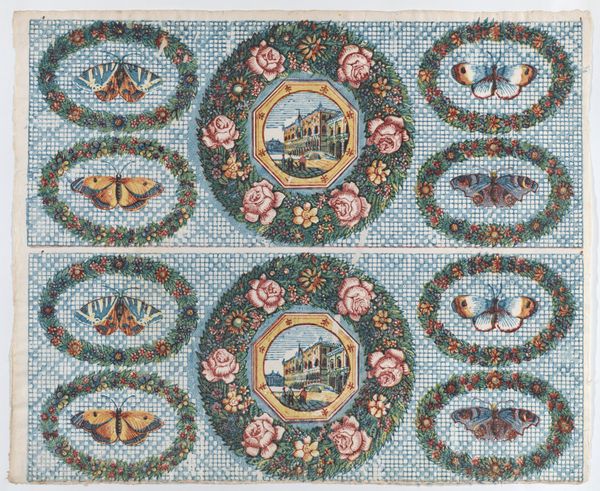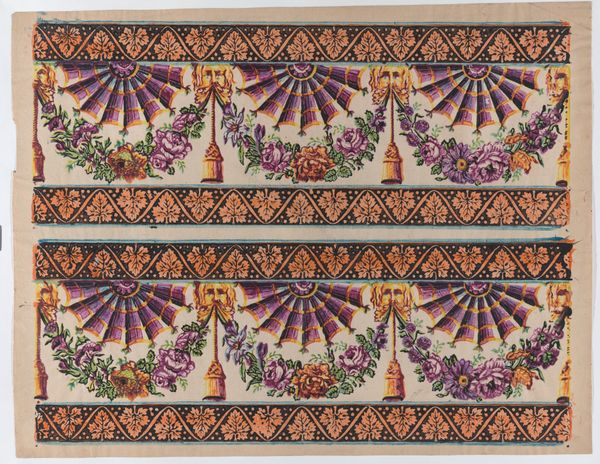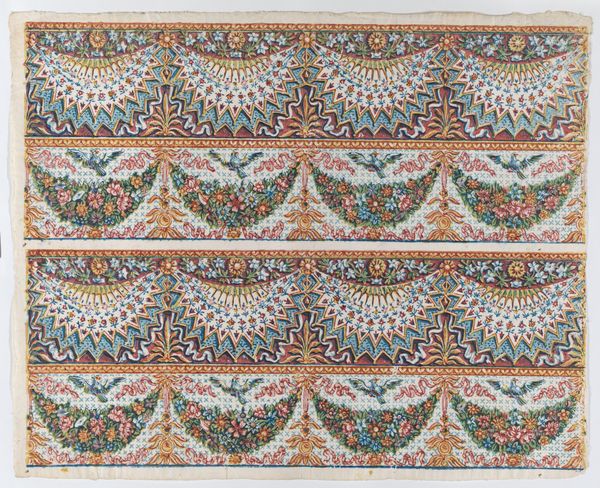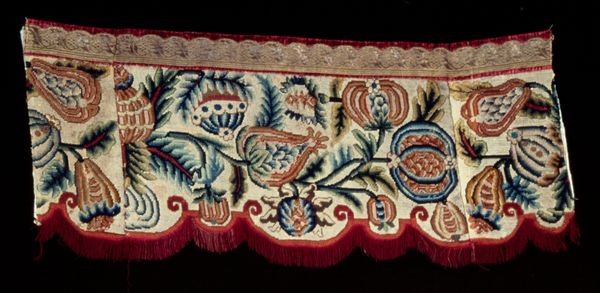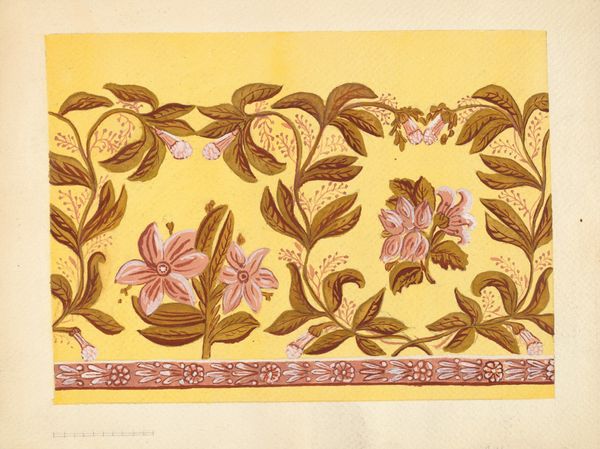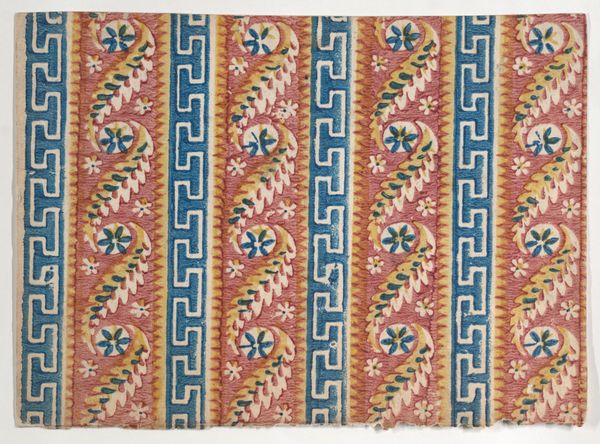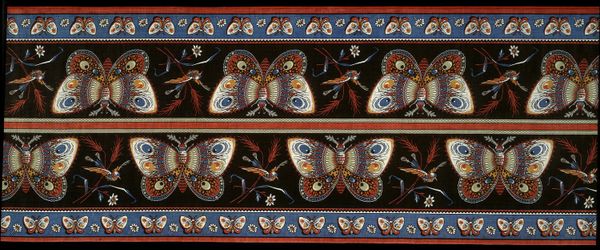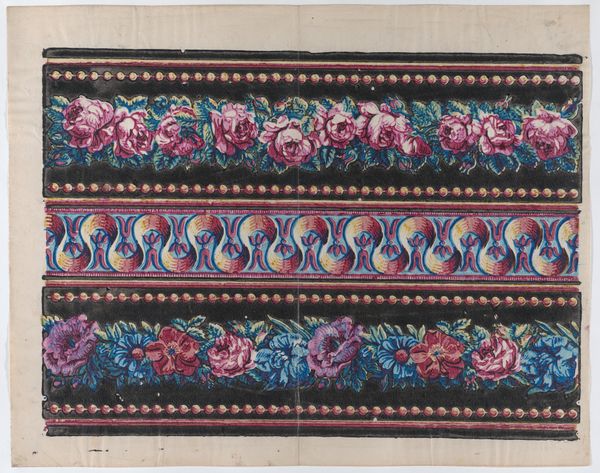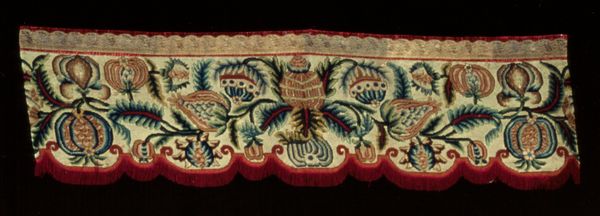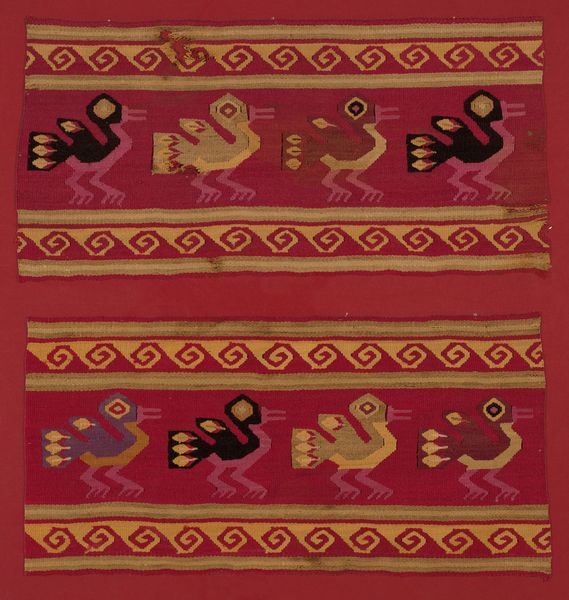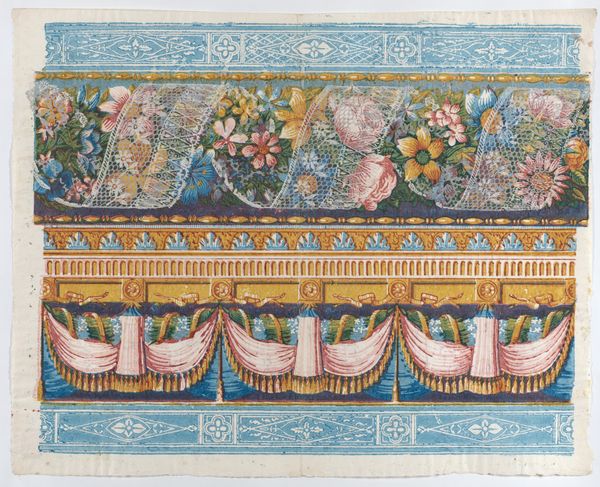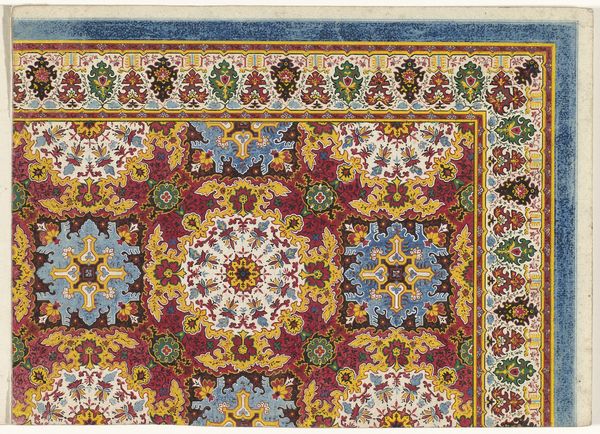
Sheet with two borders with purple drapery and floral designs 1775 - 1875
0:00
0:00
drawing, print
#
drawing
# print
#
romanticism
#
flower pattern
#
decorative-art
Dimensions: Sheet: 14 7/16 × 18 1/4 in. (36.6 × 46.3 cm)
Copyright: Public Domain
Curator: These colorful borders certainly catch the eye. They present what appears to be draped fabric punctuated with floral designs. Editor: Indeed. At first glance, the pastel color palette of pink, yellow, and teal exudes a cheerful Rococo charm. The interplay of shapes, with its geometric borders meeting the softer curves of the floral drapery, creates a playful visual rhythm. Curator: What we're looking at here is a "Sheet with two borders with purple drapery and floral designs." It’s held in the collection of the Metropolitan Museum of Art, and its creation is placed sometime between 1775 and 1875. As the metadata indicate, it is a drawing and a print from an anonymous author and falls within Romanticism. The use of repetitive, decorative patterns was quite common during the era. Considering the time, what can the fabric and design say about the domestic space? Editor: Interesting. To me, it feels like an early exploration of asymmetry against a rigid, architectural structure. Take away the pattern and color, and the base geometric composition has visual interest due to how the line structures create an imagined three-dimensional effect. The anonymous signature also opens up fascinating considerations regarding domestic craft during the period and issues of class and accessibility within visual art making. Curator: Absolutely, these would have been accessible to the popular classes through reproduction; however, one has to ask: Who produced these types of prints, and for what audience? We might question whether the decorative print reinforced or perhaps even subverted existing societal structures and domestic expectations. Were women meant to aspire toward the lives depicted, or was there something more complicated afoot? The presence of the flowers complicates what seems to be an upper-middle-class staging of drapery, pointing to something almost revolutionary and perhaps even proto-feminist. Editor: You bring up fascinating questions. Personally, I’m left contemplating the enduring appeal of ornamentation, from these hand-drawn motifs to our contemporary digital interfaces. It feels incredibly modern to think that one can play at homemaking just through accessing design elements, as the subject may have been back then when she could reproduce such design elements with needle and thread. Curator: A rich confluence of design, access, and meaning. Thank you for helping shed light on this print. Editor: It was my pleasure. Thank you.
Comments
No comments
Be the first to comment and join the conversation on the ultimate creative platform.
